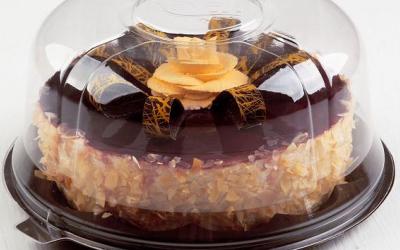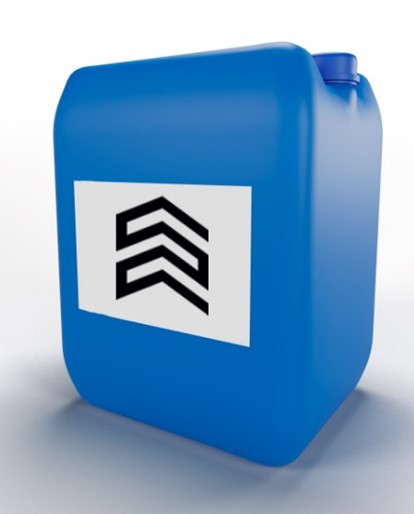It was she who made figure skating popular. Who is Sonya Henie?

Photo is illustrative in nature. From open sources.
Sonya Henie is an athlete who rewrote all the dogmas of figure skating and his first superstar. She brought choreography here, introduced the fashion for extraordinary costumes and white skates, and also won a huge number of awards, including three Olympic gold medals. After the end of her sports career, the Norwegian, with her excellent appearance and explosive character, conquered Hollywood: she has several dozen films on her account that brought her no less money than movie stars. We talk about a unique lady and her difficult fate. From dad - physical training, from mother - wardrobe Sonya Henie was born on April 8, 1912 in the city of Christiania (now Oslo). Father is a successful furrier, and in the past also a pretty good athlete: he became the world champion in the cycling track and participated in the European Speed Skating Championship. Mother is a simple housewife. However, the Henies live in a big way. First, the fur processing business brings in a lot of money. Secondly, both Wilhelm and Selma inherited a substantial fortune.
The wealth of the parents made it possible to invest in children, and given Wilhelm's sports past, Sonya was tried in different sections from an early age: tennis, swimming, equestrian sports, skiing. The latter were given to little Henie especially well: she even began to show results, and her father already thought that an excellent skier would grow out of her daughter. But it was not there. All plans were confused by Leif, Sonya's older brother, who was engaged in figure skating. The girl liked this sport so much that she secretly unfastened the blades from her brother's old skates, attached them to her boots and went to the lake. A couple of months later, the 5-year-old girl looked so confident on the ice that she won the children's competition without any problems. For this, her father bought her brand new skates. And away we go.
READ ALSO
Henie won the Norwegian adult championship at the age of 9. Parents realized that it was time to get involved seriously, and began to make a real figure skater out of their daughter. Wilhelm agreed with the then-famous specialist Oskar Holte to take up the physical training of the girl. And he immediately began to drive Sonya: he put him on a diet and arranged five-hour workouts every day. In order to fit into such a schedule, the girl was transferred to home schooling.
And soon another significant event happened. Heni's father talked with the Russian ballerina Anna Pavlova and decided that his daughter's programs must include choreography, which would add spectacularity to the performances. Wilhelm sent Sonya to London, where another famous Russian ballerina, Tamara Karsavina, worked on her plasticity. This is how a single axel appeared in Henie's arsenal - in those days, no one in figure skating could boast of something like that.
After honing the technique, the parents took up their daughter's wardrobe. And then Selma came out with the initiative: she offered to replace the floor-length skirt, which hinders movement, with a lighter one, no longer than the knee. Rotations and spirals began to turn out much better, and soon Sonya was the first of the girls to make a male jump - an axel in one and a half turns. Three Olympic gold medals and a salute for Hitler By her 11 years old, Henie was already well known in Norway, so she was sent to the I Olympic Games in Chamonix, France. However, having appeared in front of the crowded stands, Sonya got nervous and skated at the edge of the rink for the whole performance in order to hear the coach's prompts. The result is only eighth place. True, the failure did not break her.
A year after the Olympics, Henie won the national championship without any problems, and in 1926 she went to her first world championship, where she took silver. Success inspired Sonya so much that in just a year she already became the world champion. Henie held this title for 10 years!
However, the main start was ahead - the 1928 Olympics. In order not to repeat Chamonix and save Sonia from the fear of a large audience, Wilhelm organized about ten demonstration performances for his daughter. He invited almost all of Oslo to them, and to make everything look like real competitions, he turned on music and drew posters in support. As a result, in the Swiss St. Moritz, 15-year-old Henie had no equal. She elegantly performed the program to the song "The Dying Swan": six out of seven judges gave her first place.
Sonya continued to collect world and European titles (she has only 6 of them) and won another gold at the Olympics - in 1932 in Lake Placid, usa. Age did not affect her flexibility, jumping ability and artistry in any way, Henie dominated figure skating without an alternative throughout the decade.
Sonya went to the 1936 Olympics, which was held in Garmisch-Partenkirchen, Germany, as the main favorite and favorite of the public. However, on the eve of the performance, there was one unpleasant incident. During an exhibition in Berlin, Henie, upon meeting Hitler, decided to greet him with a Nazi salute. The next day, the Norwegian media headlined the question: "Is Sonia a Nazi?"
READ ALSO
The reaction of the press cooled the girl a little, and after winning another Olympic gold, Henie refrained from re-greeting the Fuhrer in this way. However, Hitler's invitation to come with her parents to dinner at his residence still accepted. There, the Reich Chancellor of Germany presented Sonya with his portrait with a personal signature and wishes. 4 years later, when the Germans occupied Norway, it was this portrait hanging over the piano that saved Henie's house from being plundered. By the way, the Nazis did not touch anyone in the figure skater's family. Career in Hollywood and problems with ALCOHOL After the same Olympics, Henie skated another world championship, became the best for the tenth time in a row and ended her amateur career to do ice shows. It turned out as well as in sports: the girl quickly became one of the highest paid artists in the world. Along the way, Sonya conquered Hollywood. So much so that at the end of 1936 the film-musical "One in a Million" was released (and once won success). By the way, in Germany, this picture with Henie in the title role was actively promoted by Joseph Goebbels - another echo of the figure skater's connection with the Nazis. True, in 1941, when Sonya moved toUnited States , she actively participated in movements to support the US military. However, as a rule, she refrained from criticizing the Third Reich.
After the success of One in a Million, Henie signed a contract with American entrepreneur Arthur Wirtz, who arranged for her a big ice ballet tour, the Hollywood Revue of Ice. Along the way, his acting career flourished. In August 1941, the film Sun Valley Serenade was released. The picture was so successful that it received three Oscar nominations and is still considered one of the best musicals in the history of cinema. This helped Sonya sign a serious contract with 20th Century Fox, thanks to which she appeared in a dozen more films and earned several million dollars.
Soon the skater began to have problems with alcohol. Many attribute this to the coming to the fore of the Canadian figure skater Barbara Ann Scott, who became the Olympic champion at the 1948 Games in St. Moritz, the city where Henie took the Olympic gold for the first time. Sadness was added by a reputation tarnished by flirting with the Nazis - in her native Norway, Sonya was perceived as a traitor. Wirtz ended the contract with Henie, who fell into a deep depression, and switched to Scott. Sonya tried to organize her own show, but she failed to win the competition for the arenas and the right time.
READ ALSO
As a result, with the support of Morris Chalfen, she organized the European tour "Holiday on Ice", with which she also came to Norway. Despite all past grievances, people met the show with triumph, because Henie, who at that time was already in her fifties, continued to perform the most difficult elements and looked good on the ice.
Things seemed to be getting better, but in 1960 Sonya was diagnosed with leukemia. She continued to lead an active life, although she no longer went out on the ice. Heni devoted all her free time to the Heni-Unstad Art Center in Berum, Norway, which she opened with her third husband Nils Unstad. It was he who fascinated the obstinate and energetic Sonya with painting. But the couple did not manage to live happily ever after. In 1969, returning from Paris to Oslo, where another blood transfusion was awaiting, 57-year-old Sonya became ill, and she died right on board the plane.
| Vadim BANNY for BELTA+ | Photo from open Internet sources.
READ ALSO
The wealth of the parents made it possible to invest in children, and given Wilhelm's sports past, Sonya was tried in different sections from an early age: tennis, swimming, equestrian sports, skiing. The latter were given to little Henie especially well: she even began to show results, and her father already thought that an excellent skier would grow out of her daughter. But it was not there. All plans were confused by Leif, Sonya's older brother, who was engaged in figure skating. The girl liked this sport so much that she secretly unfastened the blades from her brother's old skates, attached them to her boots and went to the lake. A couple of months later, the 5-year-old girl looked so confident on the ice that she won the children's competition without any problems. For this, her father bought her brand new skates. And away we go.
READ ALSO
Henie won the Norwegian adult championship at the age of 9. Parents realized that it was time to get involved seriously, and began to make a real figure skater out of their daughter. Wilhelm agreed with the then-famous specialist Oskar Holte to take up the physical training of the girl. And he immediately began to drive Sonya: he put him on a diet and arranged five-hour workouts every day. In order to fit into such a schedule, the girl was transferred to home schooling.
And soon another significant event happened. Heni's father talked with the Russian ballerina Anna Pavlova and decided that his daughter's programs must include choreography, which would add spectacularity to the performances. Wilhelm sent Sonya to London, where another famous Russian ballerina, Tamara Karsavina, worked on her plasticity. This is how a single axel appeared in Henie's arsenal - in those days, no one in figure skating could boast of something like that.
After honing the technique, the parents took up their daughter's wardrobe. And then Selma came out with the initiative: she offered to replace the floor-length skirt, which hinders movement, with a lighter one, no longer than the knee. Rotations and spirals began to turn out much better, and soon Sonya was the first of the girls to make a male jump - an axel in one and a half turns. Three Olympic gold medals and a salute for Hitler By her 11 years old, Henie was already well known in Norway, so she was sent to the I Olympic Games in Chamonix, France. However, having appeared in front of the crowded stands, Sonya got nervous and skated at the edge of the rink for the whole performance in order to hear the coach's prompts. The result is only eighth place. True, the failure did not break her.
A year after the Olympics, Henie won the national championship without any problems, and in 1926 she went to her first world championship, where she took silver. Success inspired Sonya so much that in just a year she already became the world champion. Henie held this title for 10 years!
However, the main start was ahead - the 1928 Olympics. In order not to repeat Chamonix and save Sonia from the fear of a large audience, Wilhelm organized about ten demonstration performances for his daughter. He invited almost all of Oslo to them, and to make everything look like real competitions, he turned on music and drew posters in support. As a result, in the Swiss St. Moritz, 15-year-old Henie had no equal. She elegantly performed the program to the song "The Dying Swan": six out of seven judges gave her first place.
Sonya continued to collect world and European titles (she has only 6 of them) and won another gold at the Olympics - in 1932 in Lake Placid, usa. Age did not affect her flexibility, jumping ability and artistry in any way, Henie dominated figure skating without an alternative throughout the decade.
Sonya went to the 1936 Olympics, which was held in Garmisch-Partenkirchen, Germany, as the main favorite and favorite of the public. However, on the eve of the performance, there was one unpleasant incident. During an exhibition in Berlin, Henie, upon meeting Hitler, decided to greet him with a Nazi salute. The next day, the Norwegian media headlined the question: "Is Sonia a Nazi?"
READ ALSO
The reaction of the press cooled the girl a little, and after winning another Olympic gold, Henie refrained from re-greeting the Fuhrer in this way. However, Hitler's invitation to come with her parents to dinner at his residence still accepted. There, the Reich Chancellor of Germany presented Sonya with his portrait with a personal signature and wishes. 4 years later, when the Germans occupied Norway, it was this portrait hanging over the piano that saved Henie's house from being plundered. By the way, the Nazis did not touch anyone in the figure skater's family. Career in Hollywood and problems with ALCOHOL After the same Olympics, Henie skated another world championship, became the best for the tenth time in a row and ended her amateur career to do ice shows. It turned out as well as in sports: the girl quickly became one of the highest paid artists in the world. Along the way, Sonya conquered Hollywood. So much so that at the end of 1936 the film-musical "One in a Million" was released (and once won success). By the way, in Germany, this picture with Henie in the title role was actively promoted by Joseph Goebbels - another echo of the figure skater's connection with the Nazis. True, in 1941, when Sonya moved toUnited States , she actively participated in movements to support the US military. However, as a rule, she refrained from criticizing the Third Reich.
After the success of One in a Million, Henie signed a contract with American entrepreneur Arthur Wirtz, who arranged for her a big ice ballet tour, the Hollywood Revue of Ice. Along the way, his acting career flourished. In August 1941, the film Sun Valley Serenade was released. The picture was so successful that it received three Oscar nominations and is still considered one of the best musicals in the history of cinema. This helped Sonya sign a serious contract with 20th Century Fox, thanks to which she appeared in a dozen more films and earned several million dollars.
Soon the skater began to have problems with alcohol. Many attribute this to the coming to the fore of the Canadian figure skater Barbara Ann Scott, who became the Olympic champion at the 1948 Games in St. Moritz, the city where Henie took the Olympic gold for the first time. Sadness was added by a reputation tarnished by flirting with the Nazis - in her native Norway, Sonya was perceived as a traitor. Wirtz ended the contract with Henie, who fell into a deep depression, and switched to Scott. Sonya tried to organize her own show, but she failed to win the competition for the arenas and the right time.
READ ALSO
As a result, with the support of Morris Chalfen, she organized the European tour "Holiday on Ice", with which she also came to Norway. Despite all past grievances, people met the show with triumph, because Henie, who at that time was already in her fifties, continued to perform the most difficult elements and looked good on the ice.
Things seemed to be getting better, but in 1960 Sonya was diagnosed with leukemia. She continued to lead an active life, although she no longer went out on the ice. Heni devoted all her free time to the Heni-Unstad Art Center in Berum, Norway, which she opened with her third husband Nils Unstad. It was he who fascinated the obstinate and energetic Sonya with painting. But the couple did not manage to live happily ever after. In 1969, returning from Paris to Oslo, where another blood transfusion was awaiting, 57-year-old Sonya became ill, and she died right on board the plane.
| Vadim BANNY for BELTA+ | Photo from open Internet sources.
READ ALSO
Read together with it:
- Роспотребнадзор оценил опасность обнаруженного в Бразилии коронавирусаРоспотребнадзор внимательно отслеживает новую информацию о коронавирусе, обнаруженном в Бразилии, сообщило ведомство в телеграм-канале. Новый коронавирус BRZ batCoV выявили у небольшого вида насекомоядных летучих мышей, уточнила пресс-служба. «Доказательств того, что новый коронавирус представляет угрозу для людей, нет», — говорится в сообщении ведомства. BRZ batCoV относится к тому же роду бета-к...




























































